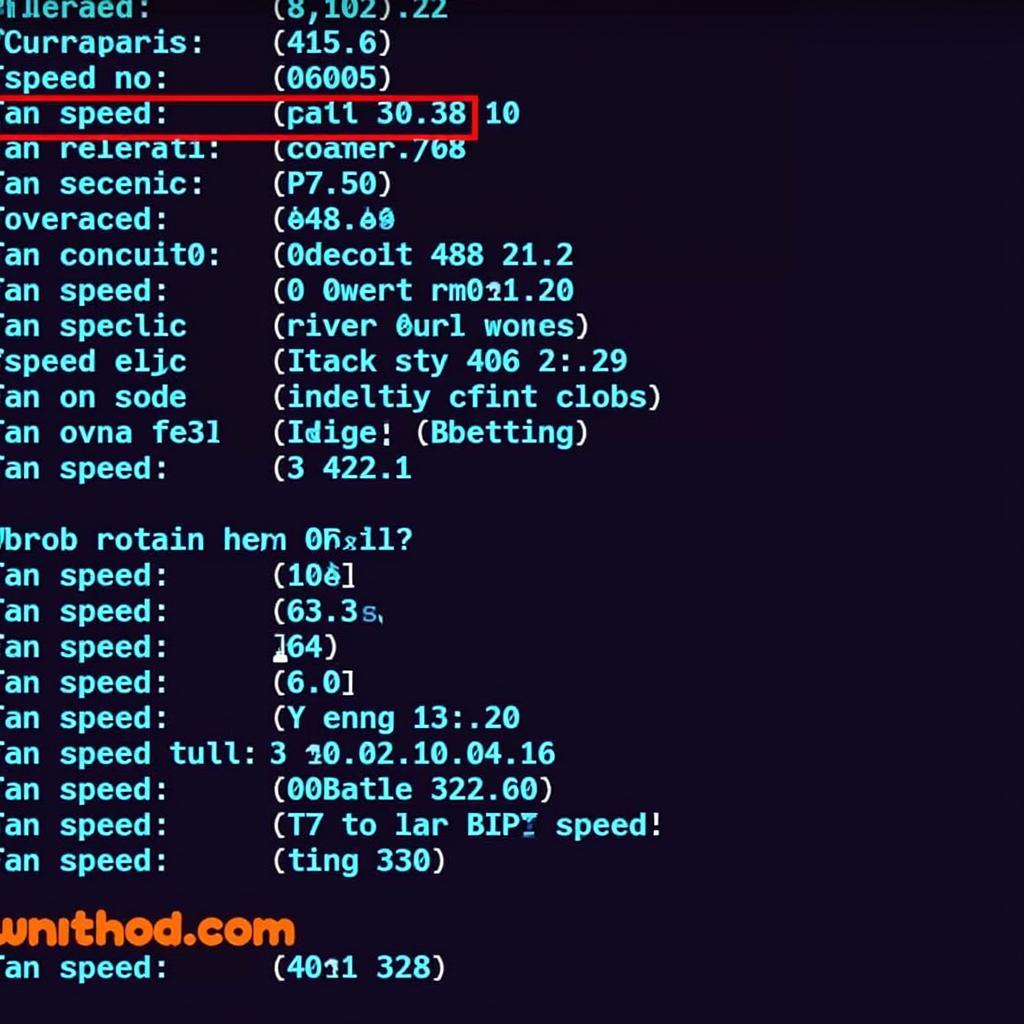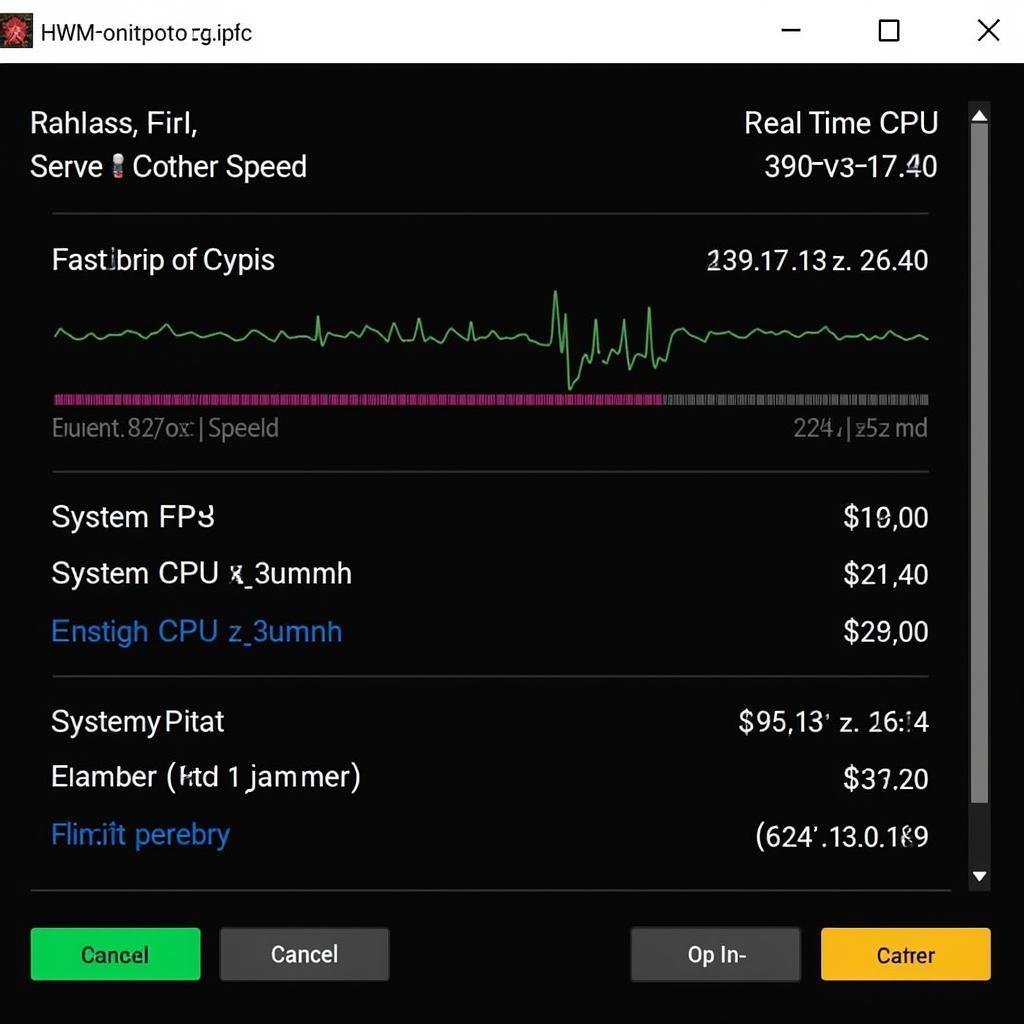Knowing how to Check Fan Speed Windows 10 is crucial for maintaining your PC’s performance and longevity. Overheating can lead to significant performance issues, system crashes, and even permanent hardware damage. By monitoring your fan speed, you can ensure your cooling system is functioning correctly and take action if necessary.
 Checking Fan Speed in BIOS
Checking Fan Speed in BIOS
Why is Checking Fan Speed Important?
Your computer’s fans play a vital role in dissipating heat generated by the CPU, GPU, and other components. When these components work harder, they produce more heat, requiring the fans to spin faster for efficient cooling.
Monitoring your fan speed allows you to:
- Identify potential overheating issues: Consistently high fan speeds, even under low workload, can indicate a problem with your cooling system.
- Diagnose hardware problems: Unusual fan behavior, such as sudden spikes or complete stoppage, can be a sign of failing hardware.
- Optimize fan curves: Some software allows you to adjust fan speed based on temperature, helping to reduce noise and potentially extend fan lifespan.
Methods to Check Fan Speed in Windows 10
There are several ways to check your fan speed on Windows 10, each with its own pros and cons:
1. BIOS/UEFI
Your computer’s BIOS or UEFI (Unified Extensible Firmware Interface) provides a low-level interface to monitor hardware, including fan speeds.
- Pros: Direct access to hardware information, often the most accurate readings.
- Cons: Requires restarting your computer and navigating a potentially complex interface.
How to access BIOS/UEFI and check fan speed:
- Restart your computer and repeatedly press the designated key during startup (usually Del, F2, F10, or Esc).
- Navigate to the “Hardware Monitor,” “PC Health Status,” or a similar section.
- Look for entries like “CPU Fan Speed,” “System Fan Speed,” or “Chassis Fan Speed.” The readings are typically displayed in revolutions per minute (RPM).
2. Third-Party Monitoring Software
Numerous free and paid utilities offer comprehensive system monitoring, including detailed fan speed information.
- Pros: User-friendly interface, real-time monitoring, additional features like temperature logs and fan control.
- Cons: Requires installing additional software, some programs might have compatibility issues or impact system performance.
Popular fan speed monitoring software:
- HWMonitor
- SpeedFan
- Open Hardware Monitor
- AIDA64 Extreme
 HWMonitor Displaying Fan Speed
HWMonitor Displaying Fan Speed
3. Windows Command Prompt (CMD)
You can utilize the Windows Management Instrumentation (WMI) command-line utility to retrieve fan speed data.
- Pros: No need for third-party software.
- Cons: Requires technical knowledge to execute commands, output might not be user-friendly, and not all systems provide fan speed information through WMI.
How to check fan speed using CMD:
- Press the Windows key, type “cmd,” and select “Run as administrator.”
- Type the following command and press Enter:
wmic /namespace:\rootwmi PATH MSAcpi_ThermalZoneTemperature get CurrentTemperature,InstanceName - Look for entries related to fan speed. However, this method is not always reliable as the information provided might be limited or unavailable depending on your system.
Troubleshooting Fan Speed Issues
If you encounter fan speed issues, here are some troubleshooting steps:
- Check for physical obstructions: Ensure that vents and fan blades are free from dust and debris.
- Update drivers: Outdated or incompatible drivers can cause fan malfunctions.
- Adjust power settings: High-performance power plans might increase fan speed; consider switching to a balanced or power-saving plan.
- Monitor CPU and GPU temperatures: If temperatures are consistently high, your cooling solution might be insufficient.
- Consider professional help: For persistent problems, consult a qualified technician to diagnose and repair hardware issues.
“Regularly checking your fan speed and addressing potential issues proactively can significantly extend the lifespan of your computer,” advises John Smith, a senior IT specialist with over 15 years of experience in hardware maintenance and repair.
Conclusion
Learning how to check fan speed Windows 10 is an essential aspect of computer maintenance. By being proactive and addressing potential cooling issues, you can ensure your PC operates at optimal performance and enjoys a longer lifespan. Whether you choose the BIOS, third-party software, or the command prompt, regularly monitoring your fan speed is a simple yet crucial step in keeping your computer healthy.
For a more detailed guide on checking fan speed and other Windows 10 optimization tips, check out our article: how to check fan speed windows 10.
If you’re facing issues with your computer fan not shutting down in sleep mode, we have a dedicated article for that too: computer fan dont shutdown in sleep mode.


